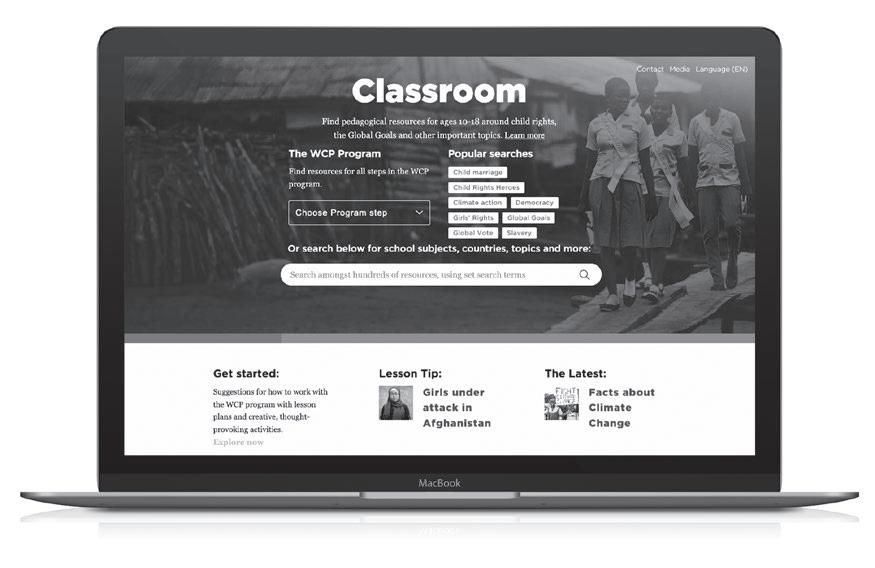
2 minute read
Child Rights Heroes LEARN FOR CHANGE
Organize fun learning activities inspired by the Child Rights Heroes.

Problem Tree
Work together with the whole class to find causes, effects and solutions linked to the challenges and problems facing Child Rights Heroes. Work with one problem at a time.
1. Draw a large tree on the blackboard or a large sheet of paper. Write the problem/challenge on the tree trunk, for example, children who can’t go to school or are married off as children.
2. Write down possible causes of the problem on the tree’s roots, such as poverty, prejudices, ancient tradition, or discrimination against certain groups. Other causes can be climate change and conflict.
3. Write down effects and consequences of the problem and “place” on the branches. For example health problems or not being able to read and write.



4. Take a step back and see if any of the causes and effects should be switched round?
5. Try to come up with ideas for solutions. Draw fruit and write the
EFFECTS (BRANCHES) PROBLEM
SOLUTIONS (FRUITS)
CAUSES (ROOTS) solutions on them before ‘hanging’ the fruit on the branches.
6. Ask the students to comment and reflect.
Role Play
Use role play as a way of illustrating different stories and experiences that students learn about from stories in The Globe. Before this activity, participants need to have read about the Child Rights Heroes and the children they are fighting for.

1. Explain that the students will act out scenes based on stories in The Globe. Also, explain that role play will give them an opportunity to practise expressing themselves and getting a message across. Point out the importance of speaking clearly and also slowly enough so that everybody in the audience can understand.
2. Divide the participants into groups of four. They can choose between the scenarios or come up with their own.
3. Once the group has decided on a scenario, the groups will prepare together. They can use the method Fair share (p. 15), to make sure that all members of the group can make suggestions and pick the best ones together.
4. Allow time for practice. If they want to, they can use props and dress up. You can visit each group, listen and give suggestions and encouragement if a group is stuck.
5. Let the groups act out their scenarios in front of one another, or perhaps for an invited audience.


SCENARIO 1: An important moment
The group acts out an important moment in the life of one of the Child Rights Heroes. They play different roles, one being the Child Rights Hero while the others play key individuals, perhaps a parent, a child, a teacher etc. Inspired by a story from The Globe, they improvise based on the situation they have chosen.
SCENARIO 2: A child’s story
The group acts out a story in The Globe about a child who has received support from a Child Rights Hero, based on an important event in the child’s life. They play different roles, perhaps a parent, a teacher or the Child Rights Hero, in addition to the role-playing children. They improvise based on the situation they have chosen.


SCENARIO 3: Press conference/interview
Two members of the group can play journalists, one is a Child Rights Hero and one is a child that has received support. They act out a press conference or interview, and the journalists pose questions to the Child Rights Hero and child. The group can agree on the questions and answers beforehand, or simply improvise.











